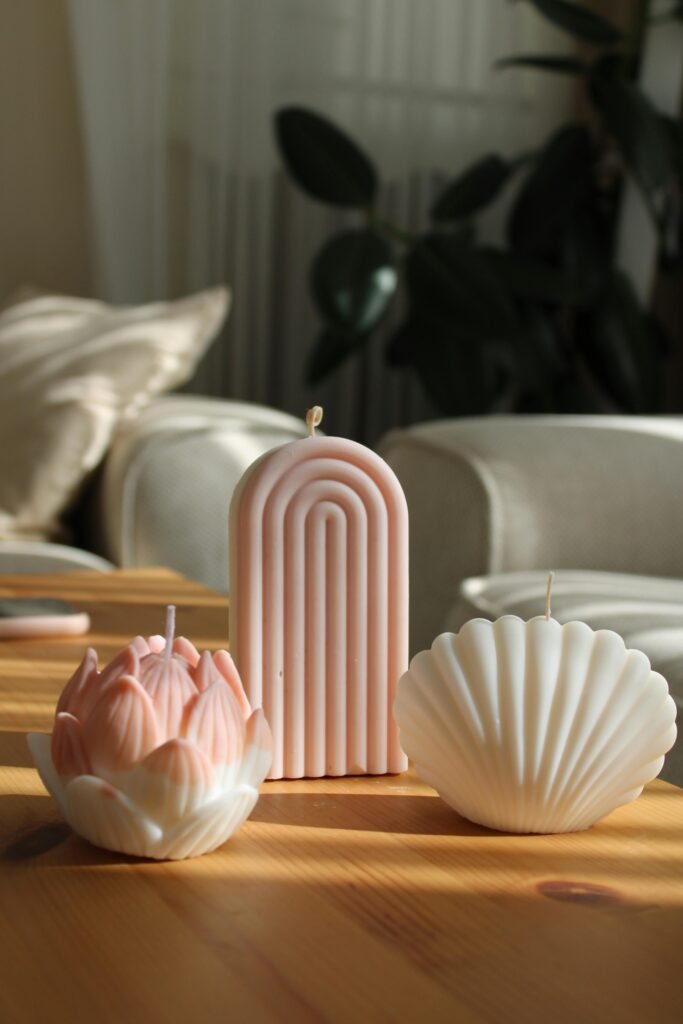Whether you’re a professional working in a noisy environment or someone who enjoys loud concerts, protecting your hearing is essential. But with so many options available, how do you choose the right hearing protection? This article aims to guide you through the decision-making process, helping you understand different types of hearing protection and factors to consider when making your choice. From earplugs to earmuffs, we’ll explore the pros and cons of each option, ensuring you find the perfect solution to safeguard your hearing.

This image is property of images.pexels.com.
Evaluate the Noise Level
Determine the typical noise level
When selecting the right hearing protection, it’s important to evaluate the noise level you will be exposed to regularly. Consider the environment you will be in, whether it’s a noisy industrial setting, a construction site, or a music concert. Understanding the typical noise level will help guide you in choosing the appropriate level of hearing protection.
Identify the peak noise level
In addition to the typical noise level, it’s crucial to identify the peak noise level you may encounter. This refers to sudden loud noises that could potentially damage your hearing. For example, if you work with heavy machinery or firearms, there may be occasional moments of extremely high noise levels. Take note of these peak noise levels as they will impact the level of hearing protection you need.
Consider the duration of exposure
Another factor to consider when evaluating the noise level is the duration of exposure. Are you exposed to loud noises for short periods, or do you spend hours in a noisy environment? This will help determine the type of hearing protection you should choose. If you are exposed to noise for extended periods, you may need a higher level of protection than someone exposed for shorter durations.
Understand Different Types of Hearing Protection
Earplugs
Earplugs are small devices that fit into the ear canal to block out noise. They are made of various materials, including foam, silicone, or wax. Earplugs come in different sizes and can be disposable or reusable. They are a popular choice for individuals seeking discreet and portable hearing protection.
Earmuffs
Earmuffs are ear coverings that consist of a headband and two cups that cover the ears. The cups are usually filled with sound-absorbing foam and fitted with seals to provide a tight fit. Earmuffs are known for their effectiveness in reducing noise levels and are commonly used in industrial settings.
Semi-insert earplugs
Semi-insert earplugs, also known as canal caps, are a combination of earplugs and earmuffs. They consist of a headband connected to two earplugs that fit into the ear canal. This design offers both the convenience of earplugs and the noise reduction capabilities of earmuffs.
Custom molded earplugs
Custom molded earplugs are individually crafted to fit your ears perfectly. These earplugs are made by taking an impression of your ear canal and manufacturing a personalized plug based on that mold. Custom molded earplugs provide superior comfort and a precise fit, making them an excellent choice for extended periods of hearing protection.

This image is property of images.pexels.com.
Consider Comfort and Fit
Choose a comfortable material for earplugs
When selecting earplugs, consider the material they are made of. Foam earplugs are soft and moldable, allowing for a custom fit that contours to your ear canal. Silicone earplugs are durable and can be washed and reused. Wax earplugs are pliable and provide a comfortable, secure fit. Choose a material that suits your preferences and offers maximum comfort.
Check the size and adjustability of earmuffs
When choosing earmuffs, it’s essential to check their size and adjustability. Look for earmuffs with adjustable headbands that can accommodate different head sizes. Ensure that the cups fully cover your ears and provide a snug, but not overly tight, fit. Comfort is key when it comes to earmuffs, so take the time to find the right size and fit for optimal protection.
Evaluate the fit of semi-insert earplugs
When trying on semi-insert earplugs, pay attention to the fit around your ears. The headband should have enough tension to hold the earplugs securely in place without causing discomfort. Ensure that the earplugs sit snugly in your ear canal, providing an effective seal against noise. Comfort and fit are crucial for prolonged use, so choose semi-insert earplugs that feel secure and comfortable.
Consider getting custom molded earplugs
If comfort is a top priority, consider investing in custom molded earplugs. These earplugs are designed specifically for your ears, ensuring a precise fit and maximum comfort. Since they are custom-made, they provide a secure seal, eliminating the risk of noise leakage. Custom molded earplugs are an excellent choice if you require long-term hearing protection.
Assess the Noise Reduction Rating (NRR)
Understand the concept of NRR
The Noise Reduction Rating (NRR) is a measure of how much hearing protection a product can provide. It indicates the level of noise reduction in decibels (dB) that the hearing protection device can achieve. A higher NRR means greater noise reduction. Understanding the concept of NRR is essential when selecting hearing protection, as it helps you determine the level of protection required for your specific needs.
Calculate the required NRR
To calculate the required NRR for your needs, you need to know the typical and peak noise levels you will be exposed to. Subtract the typical noise level from the peak noise level to determine the difference in decibels. This difference represents the level of protection you need. For example, if you are exposed to a peak noise level of 100 dB and a typical noise level of 80 dB, you would need hearing protection with at least a 20 dB NRR.
Choose hearing protection with an appropriate NRR
Once you have calculated the required NRR, choose hearing protection that meets or exceeds that rating. Keep in mind that it’s always better to err on the side of caution and choose hearing protection with a slightly higher NRR than necessary. This ensures you have an extra layer of protection and reduces the risk of potential hearing damage.

This image is property of images.pexels.com.
Consider Special Features
Select hearing protection with a sound amplification feature
If you need to communicate or be aware of your surroundings while wearing hearing protection, consider options with a sound amplification feature. These devices use microphones to pick up and amplify external sounds, allowing you to hear important alerts or have conversations without compromising the overall noise reduction. This feature is especially useful in situations where situational awareness is crucial.
Look for hearing protection with built-in communication systems
In some environments, such as industrial or construction sites, effective communication is essential. Look for hearing protection options that come with built-in communication systems. These systems enable clear communication between team members while providing the necessary hearing protection. These devices may include features like two-way radios or Bluetooth connectivity for seamless communication.
Evaluate Durability and Maintenance
Check the durability of the hearing protection
Consider the durability of the hearing protection you choose. Depending on your environment and usage, you may require more robust options that can withstand rough conditions. Look for products made from durable materials that can withstand prolonged use and potential exposure to moisture, dust, or impact.
Consider the maintenance requirements
Different types of hearing protection have varying maintenance requirements. Disposable earplugs, for example, should be disposed of after each use, while reusable earplugs may require regular cleaning. Evaluate the maintenance needs of the hearing protection you choose and ensure that it aligns with your willingness to invest time in upkeep.
Assess the lifespan of the hearing protection
The lifespan of hearing protection devices can vary depending on the quality, materials used, and frequency of use. Some products may have a limited lifespan and need replacement after a certain period. Consider the longevity of the hearing protection you select, as it can impact the overall value and cost-effectiveness of your investment.
Consider Specific Needs and Activities
Choose hearing protection suitable for shooting or hunting
If you engage in shooting or hunting activities, it’s crucial to protect your hearing from the loud noise of firearms. Look for hearing protection specifically designed for shooting, such as earmuffs with higher NRR or electronic earplugs with instant sound attenuation capabilities. These options will ensure your hearing remains protected while allowing you to focus on your activity.
Select hearing protection for industrial or construction work
For individuals working in industrial or construction environments, hearing protection is essential due to the consistently high noise levels. Choose hearing protection that meets the required NRR for these specific industries. Earmuffs with reinforced construction and high noise reduction capabilities are ideal for these settings.
Consider hearing protection for musicians or concert-goers
If you are a musician or enjoy attending concerts regularly, protecting your hearing without compromising the audio experience is crucial. Look for specialized music earplugs that offer flat attenuation, meaning they reduce all sound frequencies equally, ensuring you can still enjoy the music without distortion. These earplugs preserve the quality of sound while reducing the overall volume.
Review User Reviews and Recommendations
Read reviews and recommendations from users
Before making a final decision, take the time to read user reviews and recommendations for the hearing protection options you are considering. Real-world experiences and feedback from other users can provide valuable insights into the comfort, effectiveness, and durability of different products.
Consider feedback on comfort, effectiveness, and durability
Pay particular attention to feedback on the comfort, effectiveness, and durability of the hearing protection. Look for patterns in the reviews and consider the opinions of users who have similar needs and preferences. This information can help you make an informed decision and choose the hearing protection that best meets your requirements.
Consult with a Hearing Healthcare Professional
Seek advice from a hearing professional
If you are unsure about the right hearing protection for your specific needs, consider seeking advice from a hearing healthcare professional. They can assess your hearing health, evaluate your exposure to noise, and recommend the most suitable options based on your individual requirements.
Get a hearing test to determine specific requirements
A hearing test can provide valuable insights into your current hearing abilities and any potential damage or hearing loss. By getting a hearing test, you can better understand your specific requirements for hearing protection. This information will help you make an educated choice when selecting the right hearing protection.
Consider custom-made hearing protection options
Hearing healthcare professionals can offer custom-made hearing protection options tailored to your ears and needs. These options provide superior comfort, a precise fit, and optimal noise reduction. Custom-made hearing protection is an excellent choice for individuals who require the highest level of hearing protection and comfort.
Set a Budget
Determine the budget for hearing protection
Before making a purchase, determine your budget for hearing protection. Establishing a budget will help you narrow down your options and choose products that fit within your financial constraints. Remember to consider the long-term value and investment rather than solely focusing on upfront costs.
Compare the prices of different options
Once you have a budget in mind, compare the prices of different hearing protection options. Take into account the features, effectiveness, and durability of each product. Strive to find a balance between quality and affordability, ensuring you can make the most of your investment in hearing protection.
Consider the long-term value and investment
While price is an important factor, also consider the long-term value and investment of hearing protection. Investing in high-quality, durable options may be more cost-effective in the long run as they will last longer and provide reliable protection. Take a holistic approach when evaluating the value of different hearing protection options before making your final decision.
Choosing the right hearing protection is essential for safeguarding your hearing health. By evaluating the noise level, understanding different types of hearing protection, considering comfort and fit, assessing the noise reduction rating (NRR), considering special features, evaluating durability and maintenance, considering specific needs and activities, reviewing user reviews and recommendations, consulting with a hearing healthcare professional, and setting a budget, you can make an informed decision and select the hearing protection that best suits your needs. With the right hearing protection, you can enjoy peace of mind knowing that you are actively protecting your hearing for years to come.
